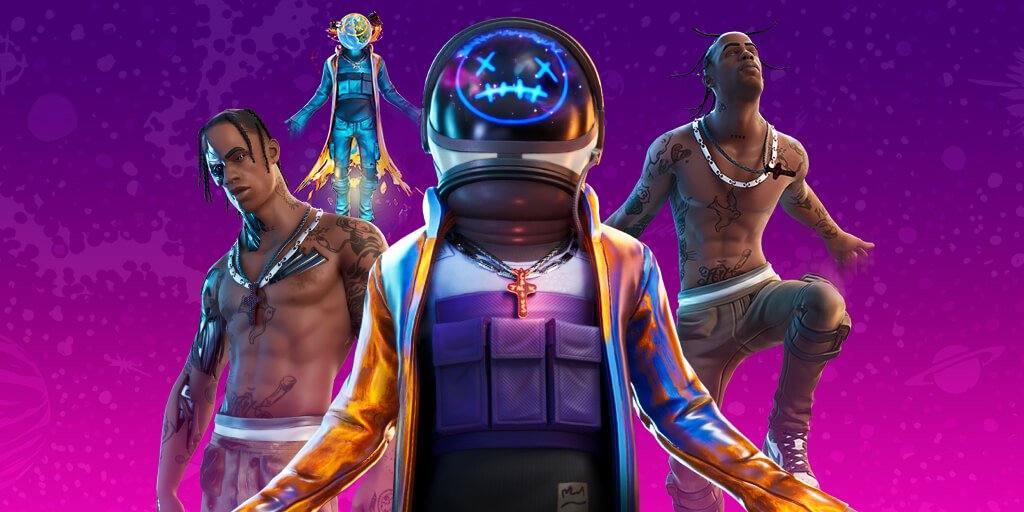Enough With the ‘Cut and Paste’: A Call to Action for the Performing Arts
JUNE 5, 2020
On February 23rd, 2020, fifteen million people watched rapper Travis Scott perform inside the video game Fortnite. Twelve million within the game, and another three million via streaming platforms like Twitch and YouTube. Since then, Scott and Epic Games, the maker of Fortnite, reprised the performance four times—with over twenty-seven million people ultimately joining to take part in the experience, according to Epic Games.
Besides record breaking audience numbers, the production is significant because it wasn’t just a performance, it was a collective experience; an immersive, live, interactive music video, delivered over the internet. For ten minutes, Scott and those 27 million people were a part of something unique, exciting and important.
If the Performing Arts community is going to emerge from the pandemic strong and vibrant, this is the kind of innovation it needs.
The “Cut and Paste” Model Won’t Save Us
We don’t know how long it’ll take for people to feel comfortable gathering in public again, but we do know it won’t be soon. As Dr. Dhruv Khullar of New York Presbyterian Hospital said in an interview with CNBC, “Only a vaccine, ubiquitous testing or vastly improved treatment will accelerate the pace of large gatherings without strict social distancing.”
While segments of the entertainment industry are pushing the boundaries of what it means to give a performance during the pandemic, much of what the performing arts community is doing is simply a ‘cut and paste’ of what we already know—with varying degrees of quality/success.
Productions like Disney’s Family Singalong and the Met’s recent star-studded live stream are entertaining, but they consistently result in the sensation that something is missing–like a one-dimensional rendering of a work that has a thousand dimensions in its original form.
How We Succeed
What we need to do is create art out of the medium; where the internet is our canvas, the performance our paint, and these innovations our brushes.
For the first time in history, digital technology has reached a point where it can be used to create a performance that moves audiences as much, if not more than a performance at the theatre. What’s more, we have advanced to the point where effective use of these technologies does not require a budget sustainable only for governments or the largest organizations.
Scott and his team didn’t achieve those numbers by simply beaming a low-quality show to a bored, captive audience of fifteen million people. They delivered a high-quality performance that exceeded expectations, and then did it again, and again, and again and again.
Here’s what made Scott’s performance so successful:
- It was immersive and Interactive.The Fortnite players were a part of the performance. They were there with Scott, interacting with the virtual world and their fellow players. If you watched the performance on Twitch, you were a bystander–the virtual equivalent of being at a basketball game versus watching it on T.V.
- It was a true spectacle.A groundbreaking production from start to finish, where the visuals were just as compelling as the music. The performance delivered something you would never expect to see in a performance, stimulating the senses like a Zeffirelli production at the Met. This was no livestream from an iPhone.
- It had a smart delivery and packaging strategy.The experience was delivered over a hugely popular, well established media channel. Fortnite has over 350 million registered users. Not everyone that plays Fortnite knew who Scott was, but they trust the Fortnite brand. The delivery channel opened Scott up to an entirely new audience. It used a platform the audience was already familiar with. Just as the American Idol audience knows how to turn on their TVs, Scott’s audience knows how to enter and move around the game. Finally, it was formatted to fit audience taste–10 minutes, high paced, in keeping with the style and ethos Fortnite players are used to and expect.
- It was exclusive.Watching the event from within the game allowed for an experience unavailable to those who watched from Twitch or YouTube. In order to “attend” the concert, you had to be a Fortnite player.
The Leap
The ways we reach, move and excite audiences with these innovations will not be the same as through live, in-person performance. The possibilities are infinite; from immersive performances in virtual space, to technology that allows a global audience to literally feel the heartbeat of a performer in real-time.
This is my call to action for the performing arts community. We cannot continue to look at the internet as a slightly more advanced television channel. Seize the moment, use these tools to invent completely new revenue-generating opportunities that keep our community alive and vibrant, so that we may continue to serve the vital role we’ve played in society for millennium—to unite, to captivate, to teach and to heal.


